Eating healthy is one of the simplest things you can do for yourself BUT due to all the crazy diets, the celebrity fads, the online weight loss success stories, it can feel very difficult. It doesn't have to! I'm here to clear things up and make it simple.
Eating healthy has two main teams:
Let's discuss each and decide what is the better approach for you.
Clean eating:
This approach to healthy eating is about incorporating whole foods into your day. Whole foods are vegetables, fruits, whole grains and anything that has not been packaged in a box, container or processed in a factory. Eating these non-processed foods is considered clean eating because you are not absorbing chemicals, additives and preservatives that come with food processing. Clean eating is eating foods in their most natural form.
When you eat foods close to nature, you are avoiding the need to 'watch what you eat' because everything you eat is good for you. When you follow a clean eating 'diet' you generally don't restrict the amount of food you eat because more food is essentially just more nutrients.
Calorie counting:
This approach to healthy eating involves keeping track of exactly how many calories each item of food has, and how many calories you need to maintain, gain or lose weight. This type of 'diet' is about energy going in as food and energy going out as exercise. You need to count each item that goes into your meals and snacks to ensure that if you want to lose weight, that your intake of food (calories in) is less than used during exercise (calories burned).
I have never liked math! But you don't have to be good at math to know that a bowl of ice cream and a handful of carrots have a different amount of calories. If those are your items to compare- then you can eat a very different amount of each food for the same amount of calories.
All calories are not created equal!
If your diet allows 2000 calories in a day (just for example), then technically, you could have:
2 cans of coke(140 calories each)
a 500 tub of cookie dough Ben and Jerry's (1500 cal)
and about 4 oreo cookies (about 200 calories) to complete your day.
Sound yummy? Maybe, but not exactly good for you.
Next option,
Granola (200 calories)
Coconut Yogurt (150 calories)
Green Veggie Juice (150 calories)
Snack of raw carrots (50 calories)
Spinach and Beet salad (250 calories)
Grilled chicken quesadilla (500 calories)
Green tea, lemon tea, ginger tea - you can drink tea all day (0 calories)
Apple (50 calories)
Steamed broccoli (30 calories)
Baked salmon (200 calories)
Popcorn (150 calories)
Full after all that? I hope so!
Now read through those lists again, you are within 2000 calories in both examples but very different style of eating. When you count calories, you do need to be very specific to stay within your allotted amount of food to eat BUT if all those foods are healthy and nutritious, it will take you a LOT of food to reach that amount.
When my nutrition clients ask me about diets- my goal is to teach them about how incorporating healthy, clean, natural, unprocessed, whole foods is the way to achieve long term health and weight goals. If you are trying to stick to a certain diet, or counting calories, then its not something you can easily sustain long term. For one, its a lot of work! It's also easy to miss counting an item, or miss a day or a week, and fall off the wagon completely.
For me, and my clients, it is much more important to be eating CLEAN than to be COUNTING CALORIES.
Do you agree? I would love to hear your comments below.
Do you want to try out a Clean Diet? Inside my Nutrition Resource Library, I have recipes, meal plans and everything you need to get started, for FREE!
Sign up here for instant access:
Related reading:
Haven't Changed Anything In Your Diet, But Still Gaining Weight?
**examples of calories above are not exact depending on brand, serving size, and method of food preparation (butter, sauce etc). Just as a guideline as an example of what basic calorie counting looks like.



